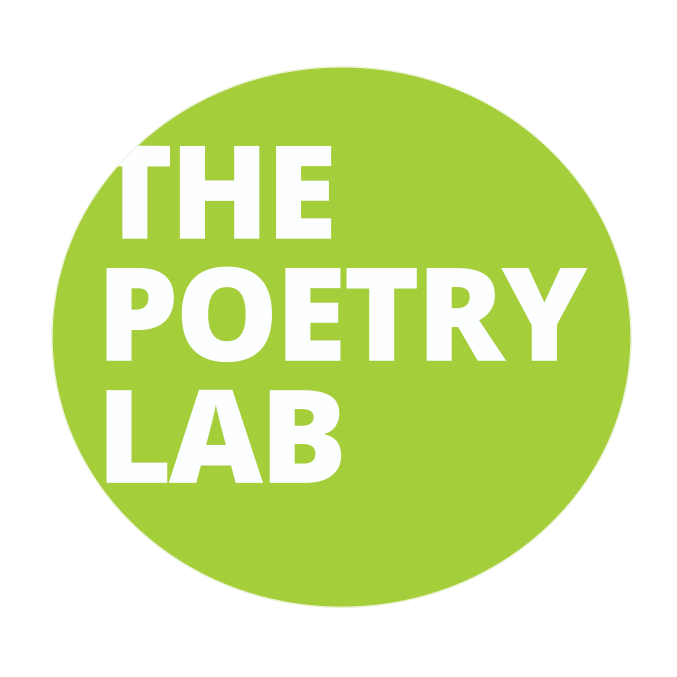Making It Work: Five Jobs for Poem Titles
One of my poetry professors used to say, “you need to name your children,” whenever I showed up in her class with another “Untitled” poem. In retrospect, I don’t think I was being very intentional in my choices not to title my poems. Instead, I think I was just grappling with a truth of writing, even if I could not articulate it at the time: titles are hard to get just right and do really important work–namely, a great title shows the reader how to read a poem.
A poem’s title is where the reader is introduced to a poet, an invitation from the poet into the depths of a poem’s magic. This is, essentially, the main job description of a title: to welcome its readers at the doorway of the poem and to draw them inside. However, the specific function titles perform can vary.
Titles can be put to work in any number of ways in a given poem, and finding the right one can be the key to unlocking a poem’s brilliance. Here are five common ways titles work in your poem:
Title Job 1: To Locate
Some titles situate a poem in a specific time and/or place. In the iconic James Wright poem, “Lying in a Hammock at William Duffy’s Farm in Pine Island, Minnesota,” the title tells the reader exactly what the speaker is doing and where. In other words, the title does the work of setting the scene.
Wright employed locating-type titles in other poems; for example, ”At the Executed Murderer's Grave” and “Autumn Begins in Martins Ferry, Ohio.”
Barbara Henning’s “On the Q” locates the speaker on the train in New York City, which becomes clear in the first line of the poem:
“—to Manhattan—through the slit—between my eyelids—an almost empty car—two women dozing.”
Here, the almost-sleeping speaker is situated in a variety of contexts–on the train itself, in the city, and in their own head.
Avni Vyas creates a very specific context, that is all at once place-based, political and personal with the title, “After Bob Across the Street Fires His Gun at a Tree to Scare Off a Raccoon While My Son and I Walk, Rachel Shows Me Night Heron Chicks.”
More Locating Titles to Explore
✨ Notice how these titles set the context for the reader on the way into the poem in different ways:
María Luisa Arroyo Cruzado, "living on marble street in the ’70s"
Christian Wiman, “After the Diagnosis”
Title Job 2: To Signal a Poetic Form
Some titles directly identify a poem that is written in an established form—sonnet, ghazal, pantoum, sestina, etc. In some cases, these titles contain the name of the form; while in others, the form name is the only title for the poem. In the poem, “Sestina: Like,” A.E. Stallings, points to her use of the sestina form as well as to the significance of the word “like” as the single repeating word in the sestina, a form typically marked by six different repeating end words.
R.A. Villanueva’s “Sonnet 146” identifies the form and along with a number, which alludes to poetic tradition of numbering of sonnets (and specifically to Shakespeare’s own “Sonnet 146”) and suggests this sonnet might exist in series.
Danez Smith’s “crown” is another example, as the poem is written in a series of sonnets or “a crown of sonnets.” Smith does not specifically say “of sonnets,”instead using only the singular word.
Jan-Henry Gray identifies both the form itself and the radif (the word that repeats at end of each couplet in a ghazal) in the poem, “Ghazal of Oranges.”
In each of these titles, the poet wants readers to go into the poem already knowing about the formal constraints that exist in their poem.
More formal Titles to Explore
✨ In these examples, look for ways that identifying the form in the title contributes to your understanding of how the poem is working.
Keith Leonard, Abecedarian on the Good Father
Ellen Bass, “Elegy for a Gopher”
Aurielle Marie, “pantoum for aiyana & not a single hashtag”
Title Job 3: To Allude or Refer
Some poets use the title as an opportunity to allude to or refer to another poem, literary work, or cultural artifact. This is yet another way the poet can use the title as an opportunity to provide reading instructions.
For example, Ama Codjoe’s “Thirteen Ways of Looking” appears to reference the well-known Wallace Stevens poem, “Thirteen Ways of Looking at a Blackbird,” without specifically acknowledging the reference. In fact, Codjoe provides an epigraph “after David Hammons’s Close Your Eyes and See Black” explicitly not referring to Stevens but to a work of contemporary art. There is no shortage of examples of “thirteen ways” poems, all of which allude to Stevens’ poem title in their own ways..
Craig Santos Perez’s “Thirteen Ways of Looking at a Glacier (after Wallace Stevens)” includes a parenthetical reference to Stevens, a decidedly explicit move.
In her poem, “The Prophetess Sojourner Truth Discusses the Two Different Versions of Her Most Well-Known Speech, One Nearly Unknown and One Very Beloved Yet Mostly Untrue,” Honorée Fanonne Jeffers alludes to the famous “Ain’t I a Woman?”speech by Sojourner Truth, while also correcting the historical record: namely that Truth’s speech was inaccurately transcribed and published by a white woman 12 years after Truth’s actual oration.
More Alluding Titles (and their allusions)
✨ How does the poet layer meaning into the poem by making these references to other works?
Safia Elhillo, From “Girls That Never Die” : Refers to a line in the song “Ghetto Supastar (That Is What You Are) by Mýa, Ol' Dirty Bastard, and Pras
Gregory Pardlo, “Raisin”: Refers to the play, A Raisin in the Sun by Lorraine Hansberry (and the play title refers to the poem “Harlem” by Langton Hughes)
Jennifer Michael Hecht, “Not Stopping by the Woods on a Snowy Evening”: Alludes to Robert Frost poem with almost the same title
Title Job 4: To Name (the Speaker, Subject, or Object)
Another broad category of poem title names the who, whom, or what in the poem. These naming titles identify the poem’s speaker:the voice—not necessarily the poet’s—the poem is written in.
Sometimes called personae poems,these poems are written in the voice of a character or other figure who is explicitly not the poet. The poem by Honorée Fanonne Jeffers poem discussed in the previous section about alluding titles is one example of a personae poem, as the poem’s speaker is Sojourner Truth.
In the poem, “From the Unwritten Letters of Joseph Freeman,” Camille Dungy also names the speaker, Joseph Freeman, a free Black man who was kidnapped and enslaved in New Jersey during the 18th century.
Self-portrait titles are another type of naming title–these poem titles reflect the poet’s imagining of themself as a different person (or non-human animal or thing). Aimee Nezhukumatathil’s “Self-Portrait as C-Section Scar” describes the attributes of the C-section scar that are common to both the scar and the speaker while commenting on new motherhood.
Some poem titles point to whom or to what the poem is addressed to or paying homage to. In “To the Man Who Shouted ‘I Like Pork Fried Rice’ at Me on the Street,” Franny Choi’s speaker talks back to an unnamed man on the street, while in “Letter to Bruce Wayne,”Matthew Olzmann addresses a fictional character, Batman’s alter ego.
Still other titles name the subject of the poem: who or what the poem is written about. Poem titles in this category sometimes begin with the word, on. For example, Major Jackson’s poem title, “On Disappearing” suggests the subject of the poem and then complicates it with the first line, “I have not disappeared.”
Another titling tradition is to identify who or what the poem is written “in praise of,” as January Gill O’Neil directly addresses to the vegetable itself, but also its cultural significance in the poem, “In Praise of Okra.”
More Naming Titles
✨ How does the naming in title enhance the reading of these examples?
Marilyn Nelson, “Marcus Garvey Sits for a Bust”
Tarfia Faizullah, “Self-Portrait As Mango”
Eduardo Corral, “To a Straight Man”
Nick Carbó, “For My Friend Who Complains He Can't Dance and Has a Severe Case of Writer's Block”
Toi Derricotte, “For my unnamed brother (1943-1943)”
Raza Ali Hasan, “On Imperialism”
Ada Limón, “In Praise of Mystery: A Poem for Europa”
Title Job 5: To Begin a Thought…
…that is completed in the poem’s first lines (see what I did there?). This type of title has dual functions. Working as both a title and a first line, it is a kind of direct “on ramp” into the body of the poem. This is an artistic choice a poet makes in order to have the title and the first line of a poem work together in a specific way.
The well-known poem “This is Just to Say” by William Carlos Williams flows right into the first lines of the very short poem, “I have eaten/ the plums.”
In another example, Juan Felipe Herrera’s title, “Everyday We Get More Illegal” leads the reader directly into the lines, “Yet the peach tree / still rises.” Herrrera’s choice of the word “yet” as the opening word in the first line announces the central tension in the poem–a response to the marginalizing word “illegal,” which is used in a derogatory way to describe people in certain political contexts.
In Beth Anne Fennelly’s poem, “The Last Hummingbird of Summer,” the first line completes the sentence the poet started in the title with “reveals itself in retrospect.”
More “First Line” Titles
✨ How does this type of title draw you in as a reader? How does it inform the pace of the poem?
Chen Chen, “I’m not a religious person but”
Brian Teare, “Convince me you have a seed there”
Terrance Hayes, “We Should Make a Documentary About Spades”
***
As Ted Kooser says in his craft book, The Poetry Home Repair Manual, “The titles and first few lines of your poem represent the hand you extend in friendship toward your reader.”
There is no one or right way to title a poem. I have come a long way in my thinking about poem titles since the glut of “untitled” poems I wrote so long ago. These days, I find myself trying on many different titles in my revision process. I hold them up to the poem like a garment in a department store mirror, squinting to see which one looks like it might fit. I examine it from all the angles in the three-way mirror, and if it’s just right, I can feel it.
This article was published on April 1, 2024. Written by:







